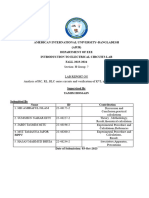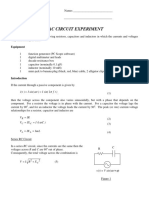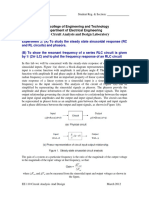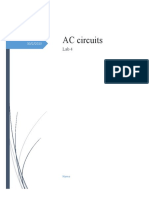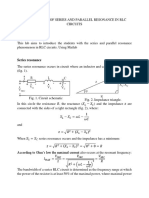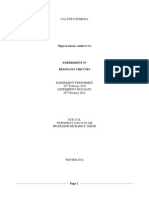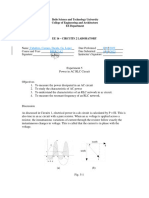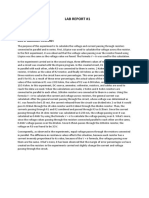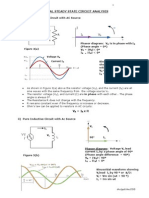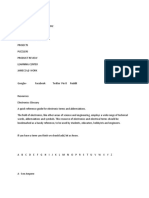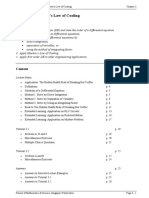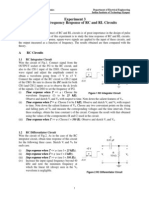0% found this document useful (0 votes)
153 views8 pagesPostlab Report #3
This document summarizes an electronics lab experiment on AC measurements in RC and RLC circuits. The goals were to observe voltages across resistance and capacitor components and find the half-power point. Simulations were conducted in Ltspice to analyze the frequency response. In RC circuits, voltage dropped as frequency increased, showing low-pass behavior. RLC circuits exhibited resonance, with the highest voltage occurring at the resonant frequency calculated as 1/2π(LC)^1/2. Voltages across the inductor and capacitor varied with frequency, depending on component impedances.
Uploaded by
Poyraz EmelCopyright
© © All Rights Reserved
We take content rights seriously. If you suspect this is your content, claim it here.
Available Formats
Download as PDF, TXT or read online on Scribd
0% found this document useful (0 votes)
153 views8 pagesPostlab Report #3
This document summarizes an electronics lab experiment on AC measurements in RC and RLC circuits. The goals were to observe voltages across resistance and capacitor components and find the half-power point. Simulations were conducted in Ltspice to analyze the frequency response. In RC circuits, voltage dropped as frequency increased, showing low-pass behavior. RLC circuits exhibited resonance, with the highest voltage occurring at the resonant frequency calculated as 1/2π(LC)^1/2. Voltages across the inductor and capacitor varied with frequency, depending on component impedances.
Uploaded by
Poyraz EmelCopyright
© © All Rights Reserved
We take content rights seriously. If you suspect this is your content, claim it here.
Available Formats
Download as PDF, TXT or read online on Scribd
/ 8
